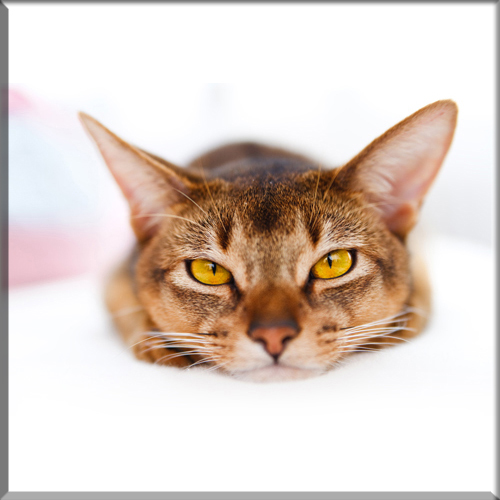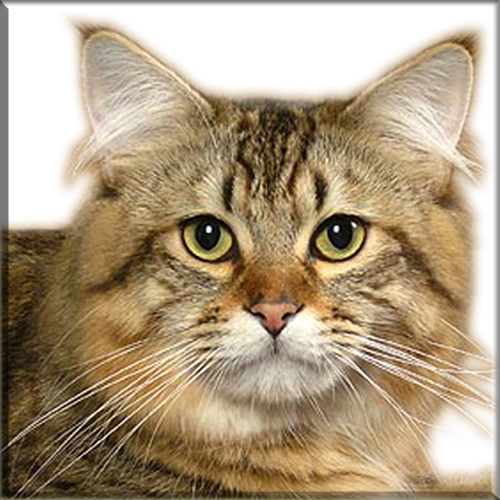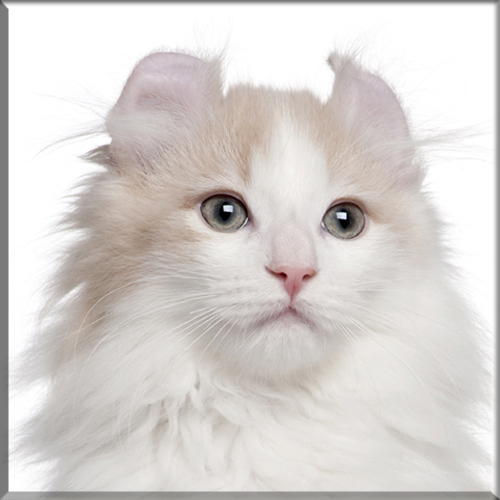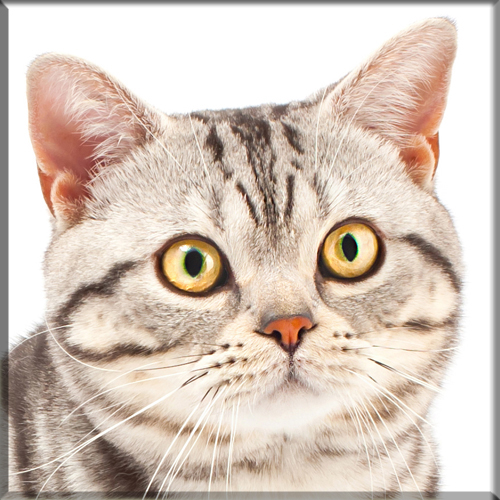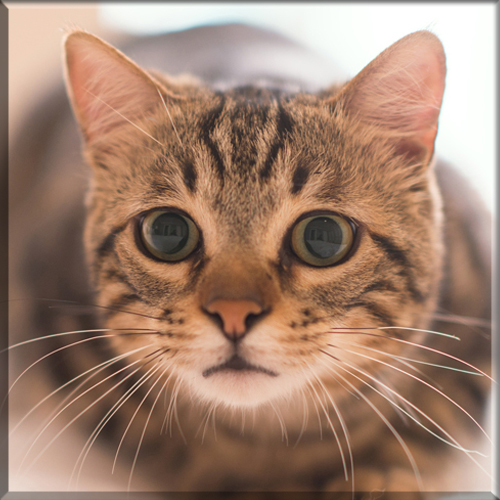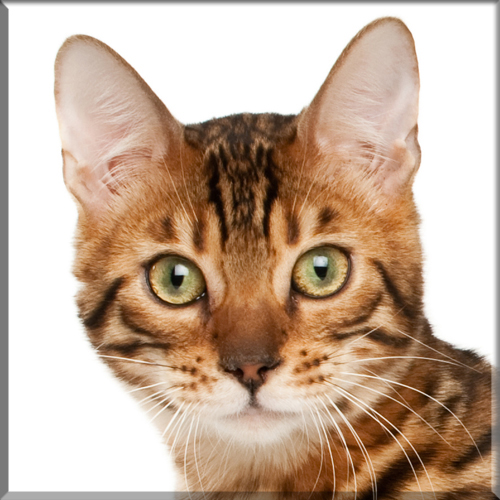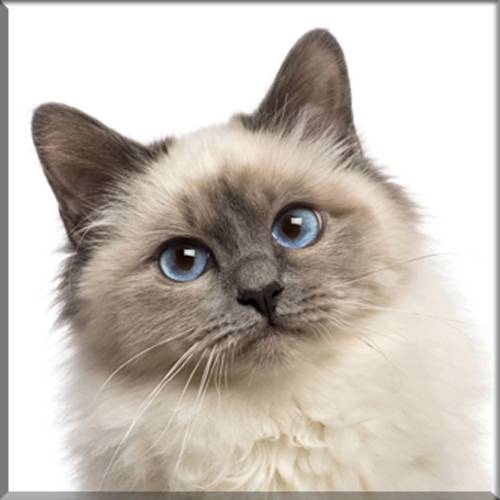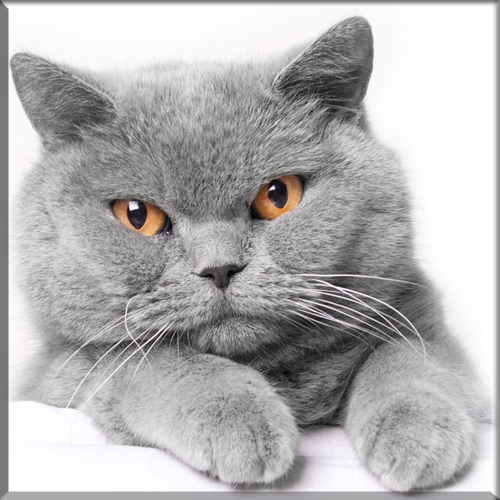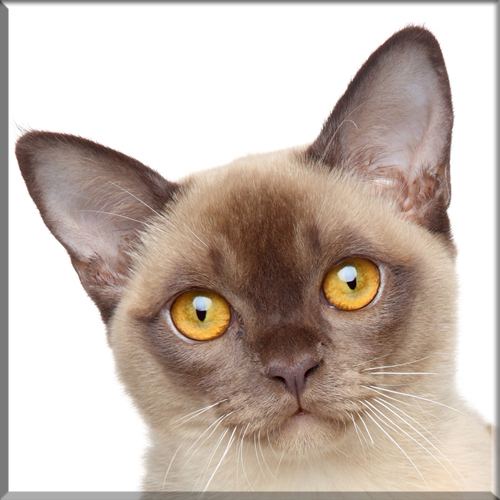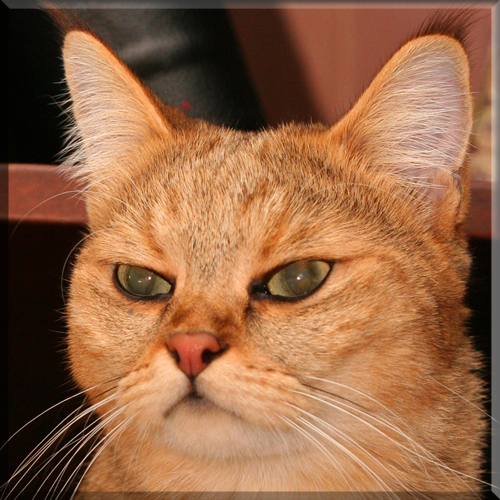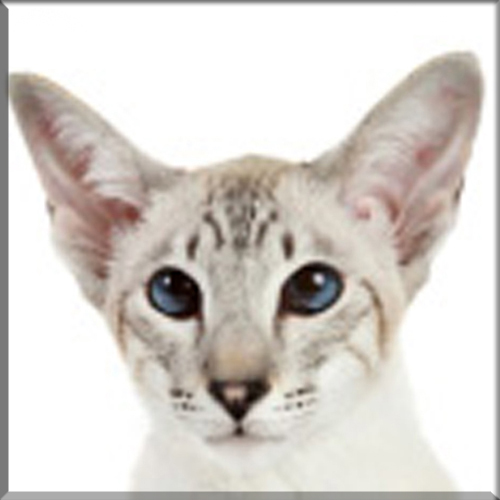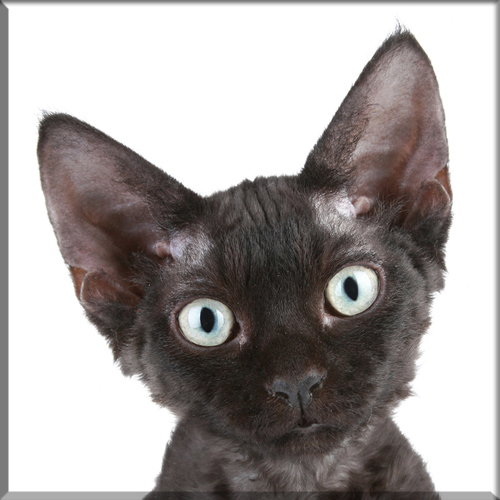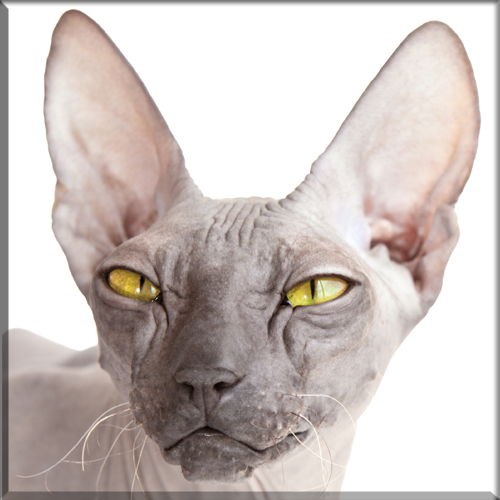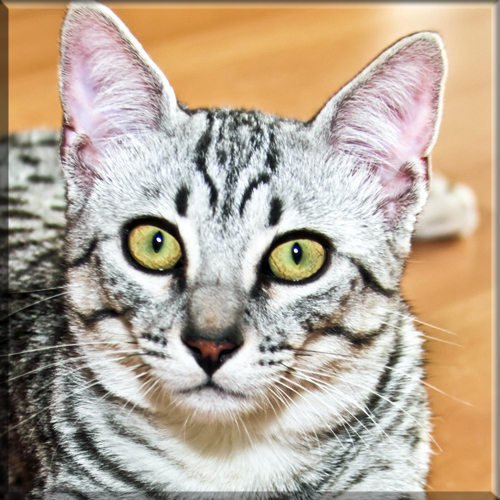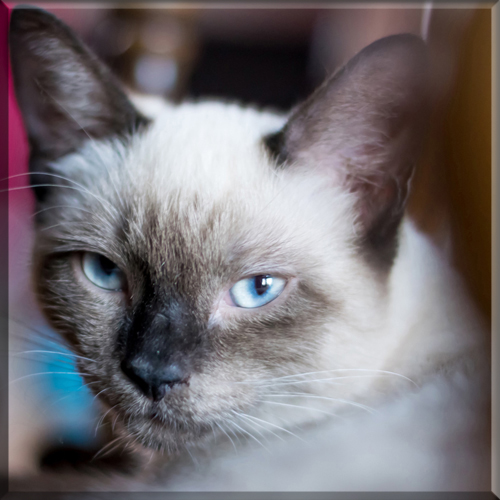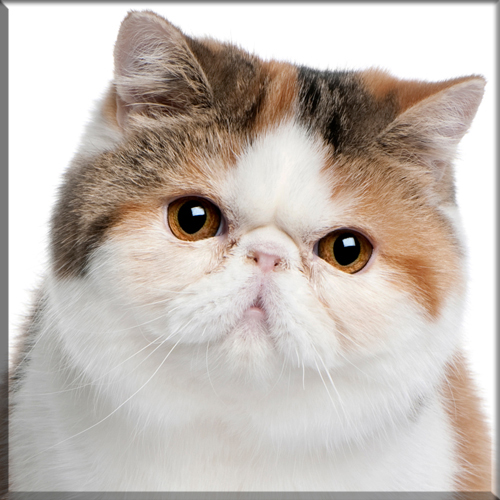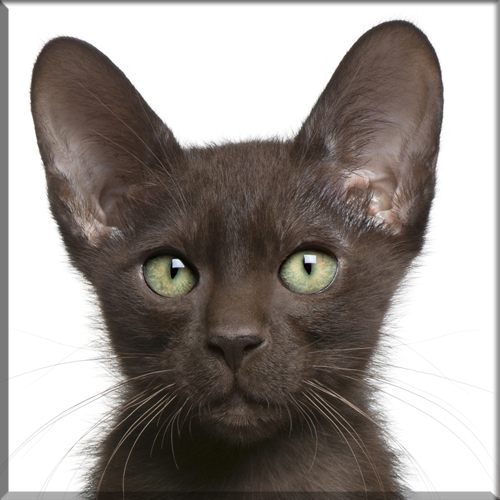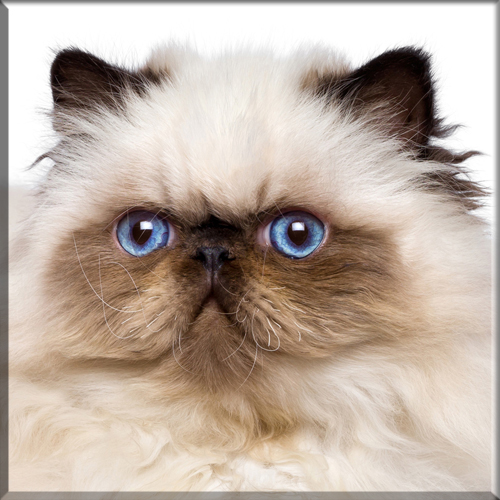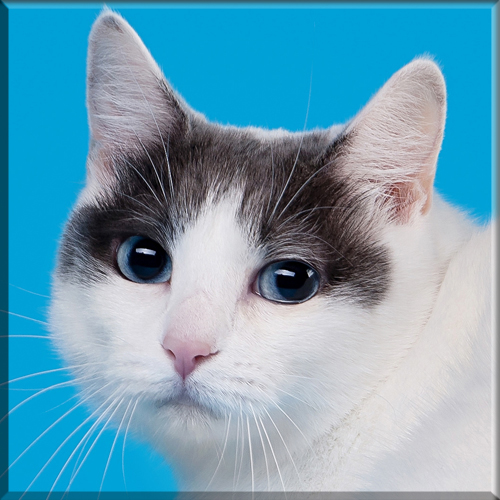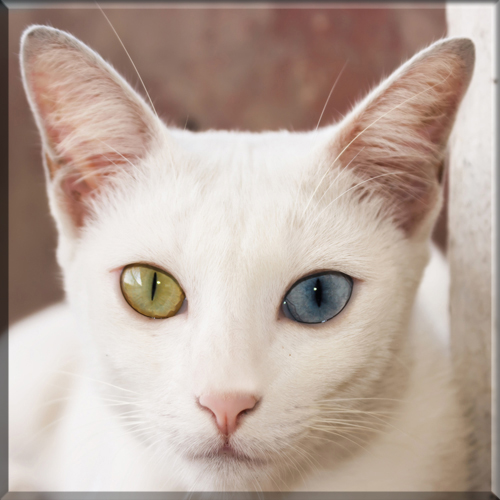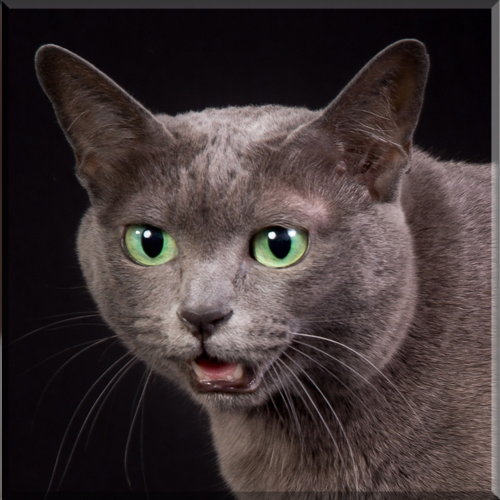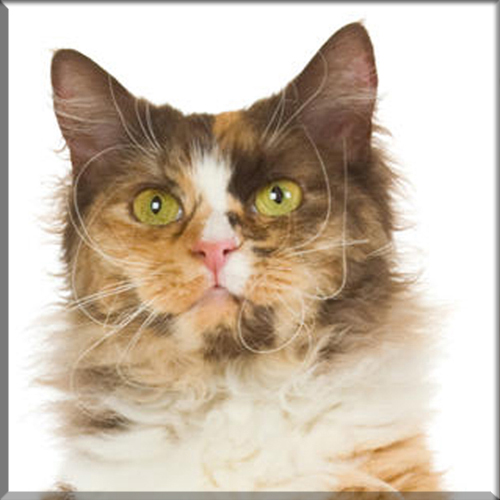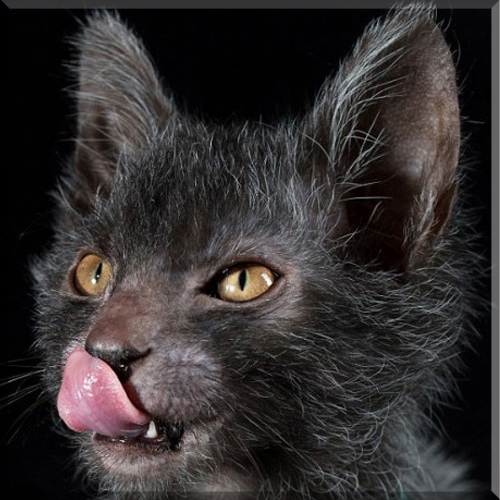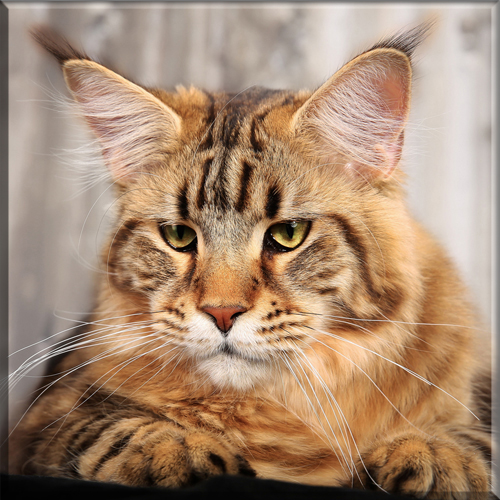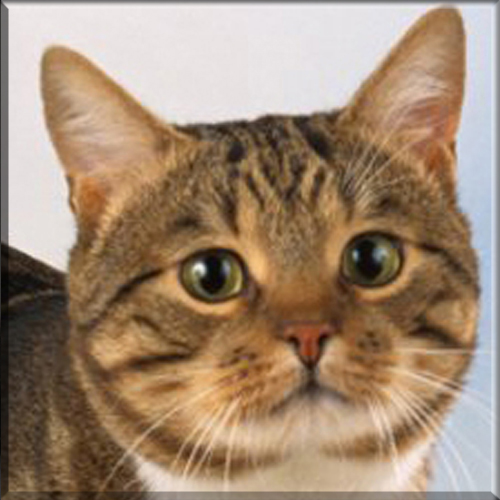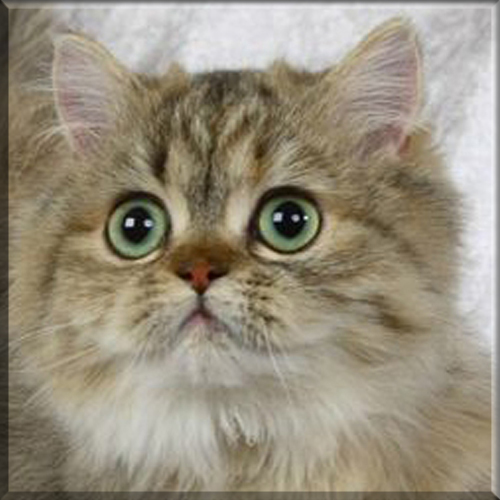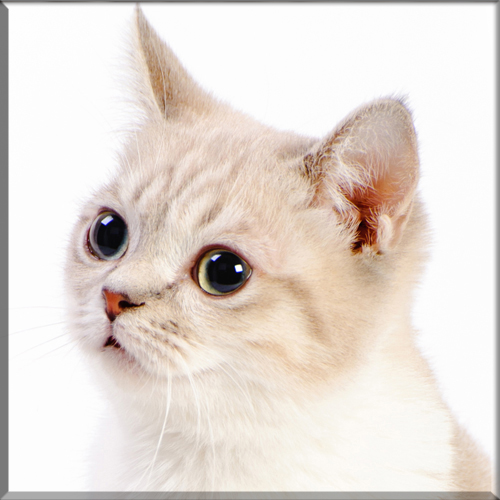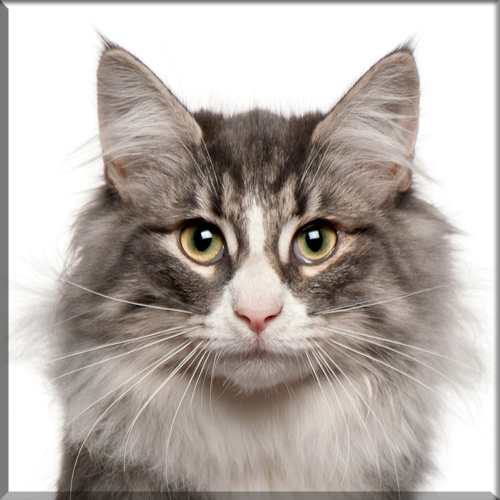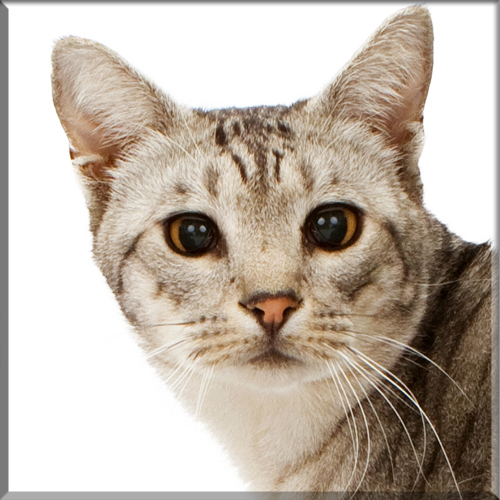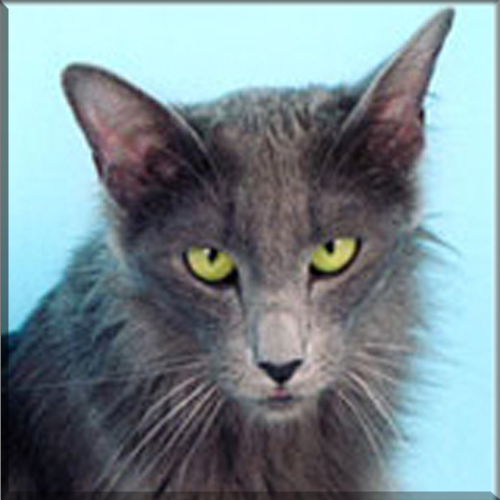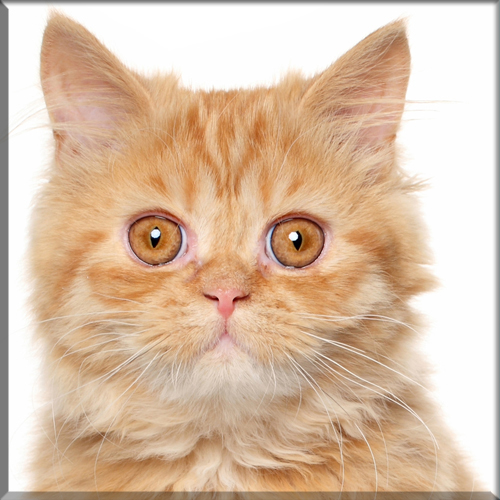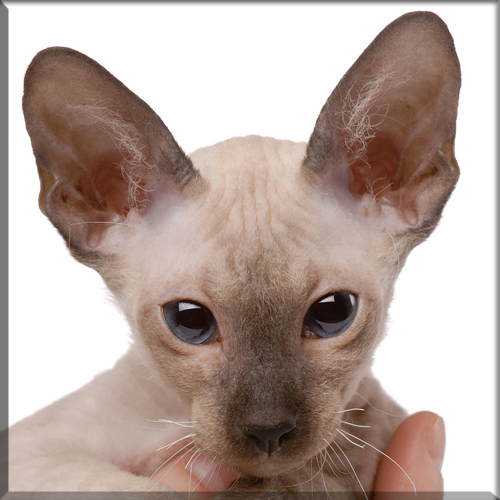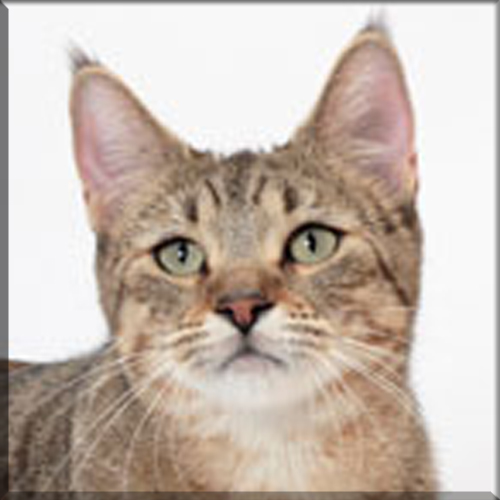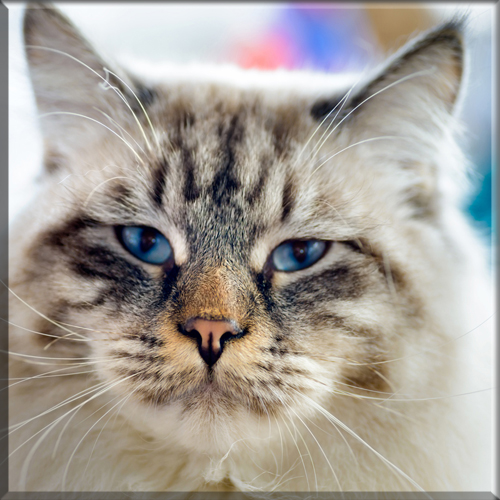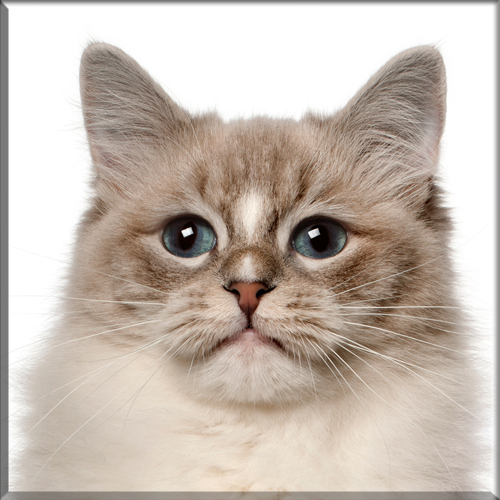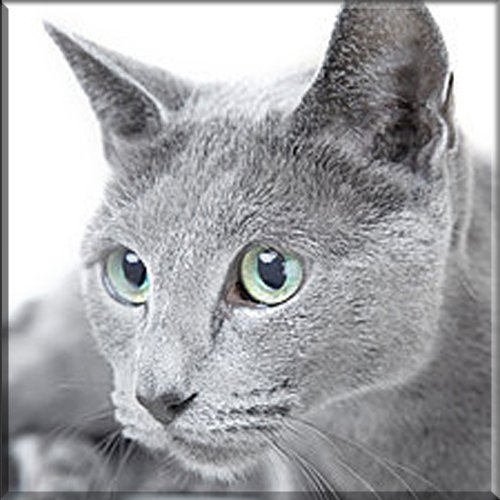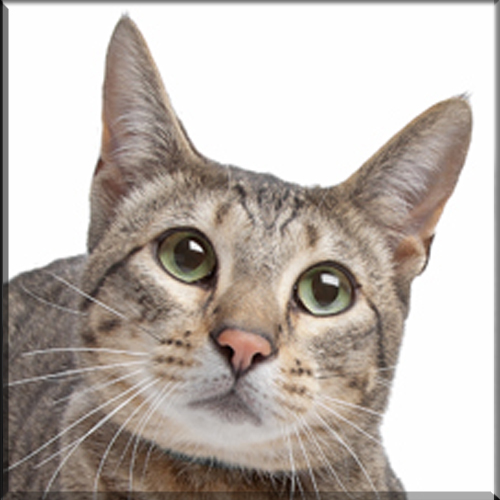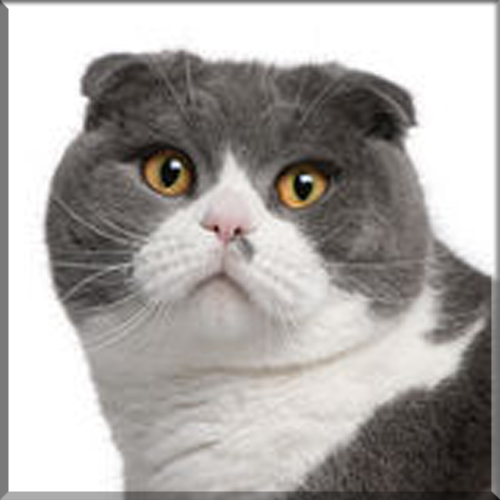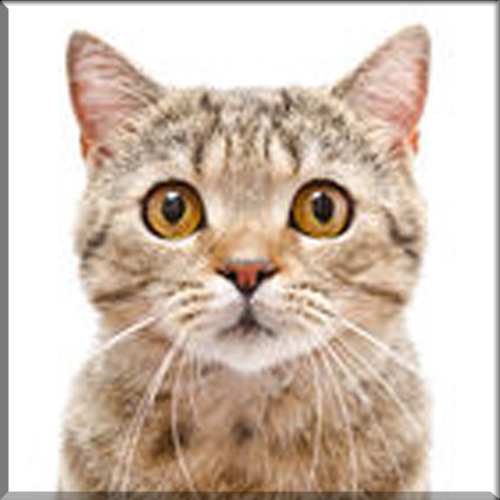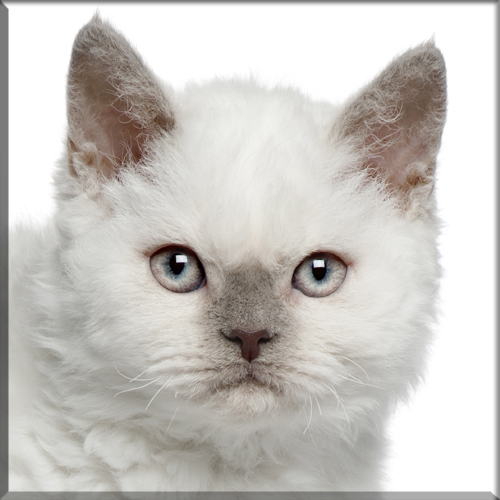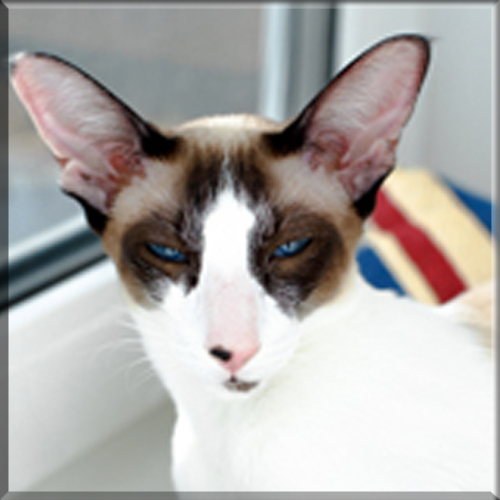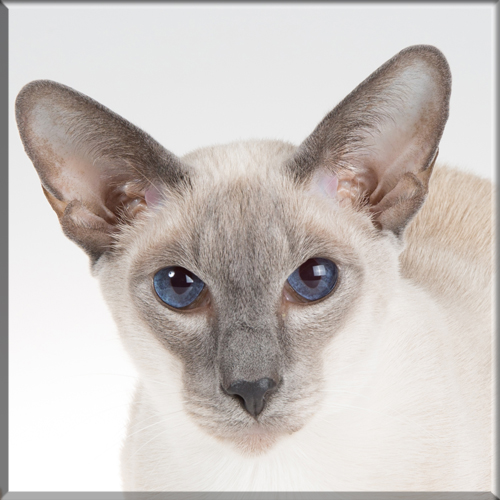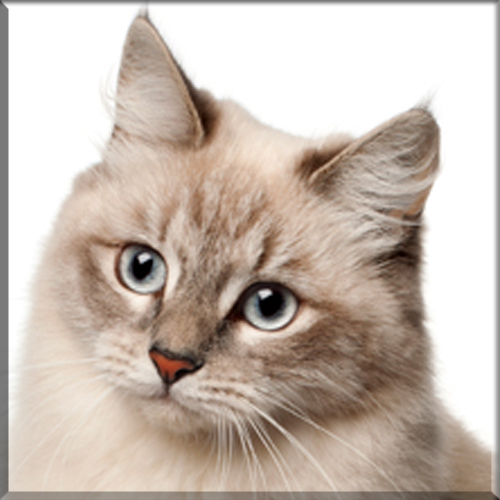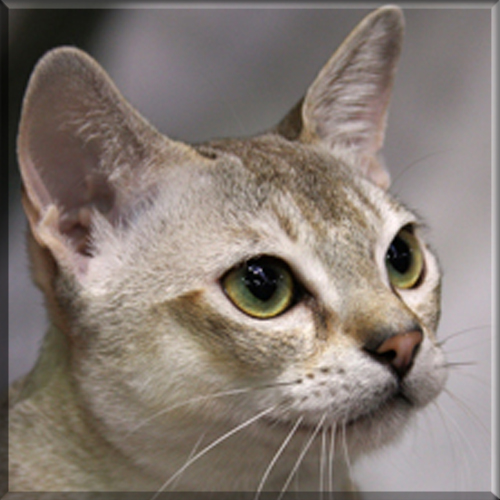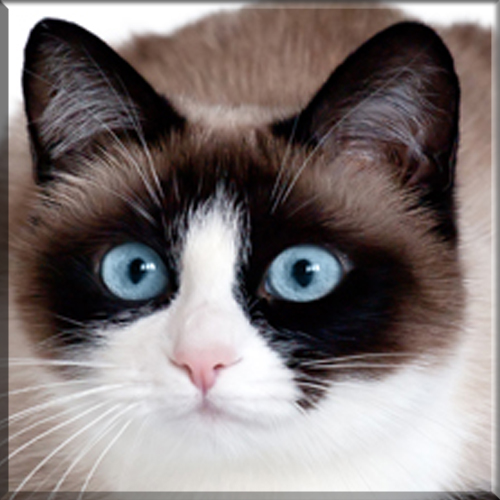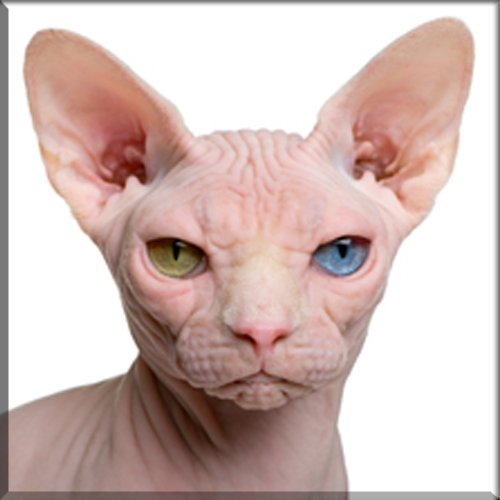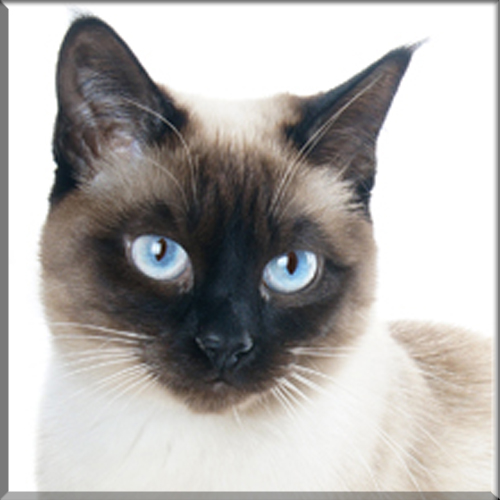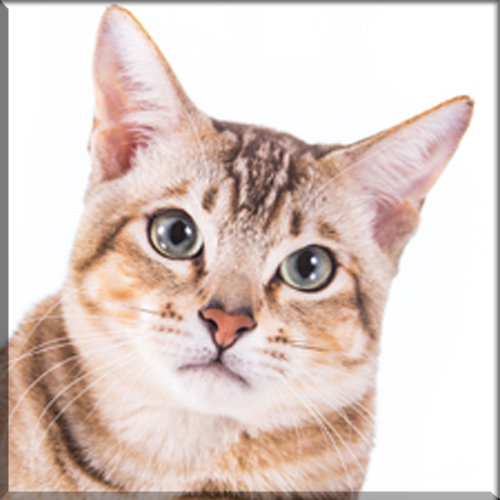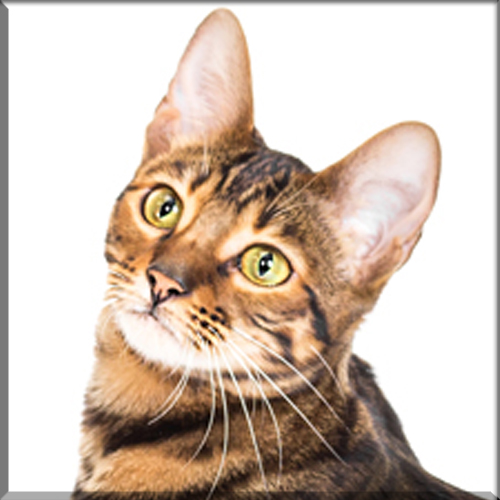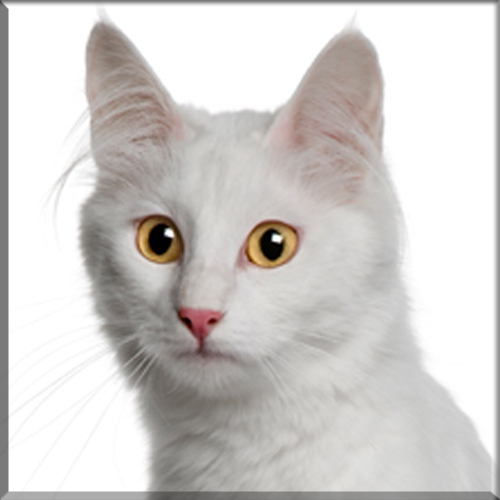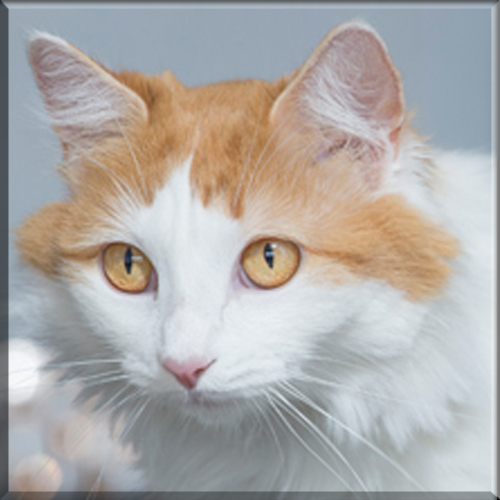Turkish Van

Appearance and features:
The coat on a Turkish Van is considered semi-long-haired. While many cats have three distinct hair types in their coat – guard hair, awn hair and down hair – the Turkish Van has no evident undercoat, only one coat.This makes their coat feel like cashmere or rabbit fur. The lack of an undercoat gives a sleek appearance. The coat is uncommonly water repellant, which makes bathing these cats a challenge, though the coat dries quickly.
The Turkish Van is one of the larger cat breeds. Ideal type should feature broad shoulders with a body that is “top-heavy”, that is, a cat with its center of gravity forward. The cat is muscular and moderately long, and its back legs are slightly longer than its front legs, but neither the cat itself nor its legs are so long as to be disproportionate. They have large paws and rippling hard muscle structure which allows them to be very strong jumpers.
Size:
This is a Large-size cat weighing 12 to 14 pounds.
Family:
The Turkish Van is a semi-long-haired breed of domestic cat, which was developed in the United Kingdom from a selection of cats obtained from various cities of modern Turkey, especially Southeast Turkey. The breed is rare, and is distinguished by the Van pattern (named for the breed), where the colour is restricted to the head and the tail, and the rest of the cat is white; this is due to the expression of the piebald white spotting gene, a type of partial leucism. A Turkish Van may have blue or amber eyes, or be odd-eyed (having one eye of each colour). The breed has been claimed to be descended from the landrace of usually all-white Van cats (Turkish: Van kedisi), mostly found near Lake Van, though one of the two original breeders’ own writings indicate clearly that none of the breed’s foundation cats came from the Van area, which has historically been in Armenia.
Coloring:
Breed standards allow for one or more body spots as long as there is no more than 20% color and the cat does not give the appearance of a bicolor. A few random spots are acceptable, but they should not detract from the pattern. The rest of the cat is white. Although red tabby and white is the classic van color, the color on a Van’s head and tail can be one of the following: red, cream, black, blue, red tabby, cream tabby, brown tabby, blue tabby, tortoiseshell, dilute tortoiseshell (also known as blue-cream), brown-patched tabby, blue-patched tabby and any other color not showing evidence of crossbreeding with the point-colored breeds (Siamese, Himalayan, etc.).
Origin:
In 1955 two British women, Laura Lushington and Sonia Halliday, on a trip to Turkey were given some cats that featured what is now termed the Van pattern, and decided to bring them home. They bred true, and were used as foundation stock for the breed. According to Lushington, her original imported cats were: Van Iskenderun Guzelli (female), a cat that came from Hatay Province, Iskenderun, and Stambul Byzantium (male), a cat given by a hotel manager in Istanbul, both in 1955. Two later additions to the gene pool were Antalya Anatolia (female), from the city of Antalya, and Burdur (male), from Burdur city, both in 1959. Lushington did not see Van city before 1963, and only stayed there “for two days and two nights”. It is unclear why the name “Turkish Van” was chosen, or why one of the original 1955 kittens was named “Van Iskenderun Guzelli”, given their provenance. Of the founding 1955 pair, Lushington wrote, in 1977:
“I was first given a pair of Van kittens in 1955 while traveling in Turkey, and decided to bring them back to England, although touring by car and mainly camping at the time – the fact that they survived in good condition showed up the great adaptability and intelligence of their breed in trying circumstances. Experience showed that they bred absolutely true. They were not known in Britain at that time and, because they make such intelligent and charming pets, I decided to try to establish the breed, and to have it recognised officially in Britain by the GCCF.”
It is unclear whether Lushington was intending to imply that the Hatay and Istanbul kittens had originally come from the Lake Van region, or was simply referring to the Turkish Van founding stock as “Van kittens” for short. Neither city is anywhere near Van Province.
Temperament:
The Turkish Van is generally very social, with a friendly disposition toward people, and the cats tend to develop a strong bond with their owners. Turkish Vans, not just with their owner, are friendly to other animals. They prefer other cats to be of the same kind, but will accept other kinds of cats. They are also friendly to “cat friendly dogs” as well. They are very playful and lively. Many Turkish Vans will play fetch, and may bring a toy to their owner to initiate play.
The native Van cat landrace of Turkey have been nicknamed the “swimming cats”, due to an unusual fascination with water. Despite the modern Turkish Van breed consisting almost entirely of pedigreed, indoor-only cats with no access to large bodies of water, and despite dubious connections between them and the cats of the Lake Van area, some feel that the Turkish Van has a notable affinity for water; for example, instead of swimming in a lake, they may stir their water bowls or play with water in the toilet, and some may even follow their owners into water. However, the idea that the breed likes water more than other cats may be mistaken according to some pet writers.
Health concerns:
Turkish Vans have been reported to develop a form of heart disease called hypertrophic cardiomyopathy.
Breed Characteristics
Here is a helpful guide for the different characteristics of the breed. On a Scale of 1-5. 1 being very low level to 5 being high level.
Hypoallergenic: No
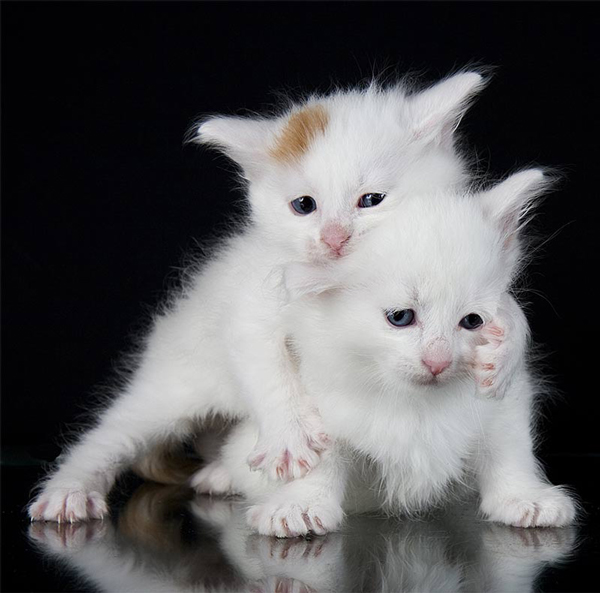
Breeders With Currently Available Kittens
All The Cat Breeds
- Abyssinian
- American Bobtail
- American Curl
- American Shorthair
- American Wirehair
- Balinese
- Bengal
- Birman
- Bombay
- British Shorthair
- Burmese
- Burmillia
- Charteux
- Chausie
- Colorpoint Shorthair
- Cornish Rex
- Devon Rex
- Donskoy
- Egyption Mau
- European Burmese
- Exotic
- Havana Brown
- Highlander
- Himalayan
- Japanese Bobtail
- Khao Manee
- Korat
- LaPerm
- Lykoi
- Maine Coon
- Manx
- Minuet / Napolean
- Munchkin
- Norwegian Forest Cat
- Ocicat
- Oriental Longhair
- Oriental Shorthair
- Persian
- Peterbald
- Pixie Bob
- Ragamuffin
- Ragdoll
- Russian Blue
- Savannah
- Scottish Fold
- Scottish Straight
- Selkirk Rex
- Seychellois
- Siamese
- Siberian
- Singapora
- Snowshoe
- Somali
- Sphynx
- Thai
- Tonkinese
- Toyger
- Turkish Angora
- Turkish Van

